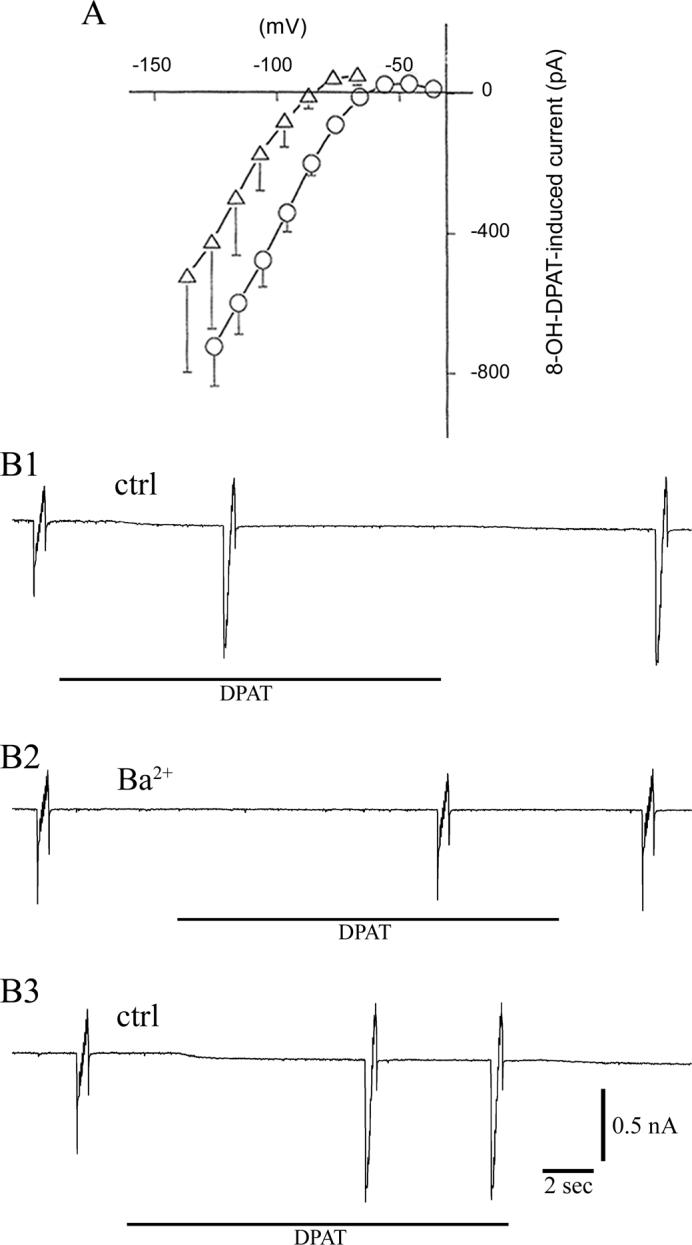Fig. 3.

A. Current-voltage (I-V) relation of 8-OH-DPAT-induced response. The current before the application of 8-OH-DPAT was subtracted from the current after the application of 8-OH-DPAT. In both 5 mM K+ (triangle) and 10 mM K+ (circle) external solutions, the conductance showed inward rectification and their reversal potentials were near EK (see the text). To measure the I-V relation, voltage pulses (50 msec in duration) were applied at a 10 mV increment. Vertical lines indicate S.D. Five neurons were examined for each of different external solutions. The holding potential was −77 mV (5 mM K+ external solution) and −76 mV (10 mM K+ external solutions). Neurons cultured for 13 days from 10-day-old rats were used. B. Effects of BaCl2 (300 μM) were investigated on 8-OH-DPAT-induced response. B1. The I-V relation before and after 8-OH-DPAT (1 μM) was measured by imposing staircase-shaped voltage sequence. Application of 8-OH-DPAT produced an inward rectifying current in the same way as in experiments in Fig. 3 A. B2. After applying 300 μM BaCl2, application of 8-OH-DPAT produced hardly any effect. B3. After washing out the BaCl2, the effect of 8-OH-DPAT was recovered considerably. The interval between the beginning of B1 and that of B2 was 176 sec, while the corresponding interval between B2 and B3 was 190 sec. We have also investigated the effects of BaCl2 at a lower concentration (100 μM): at this BaCl2 concentration: the increment of current by the application of 8-OH-DPAT was 22 ± 16% (mean ± sem, n = 5) of the control (i.e, no BaCl2). In both of these experiments neurons were cultured for 10−19 days from 11-day-old rats.
